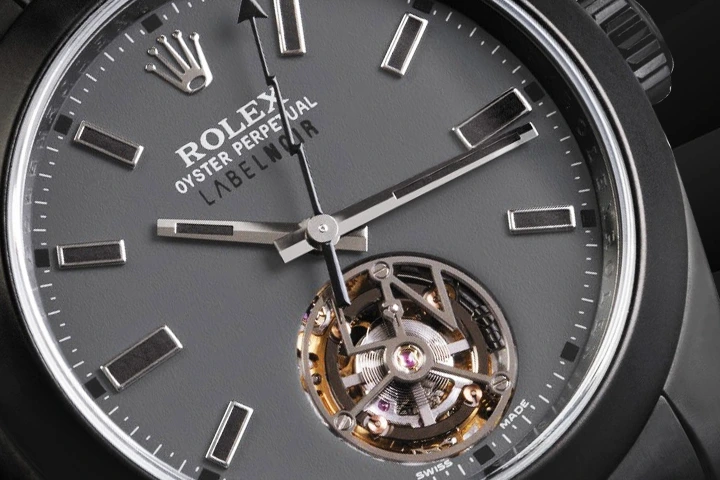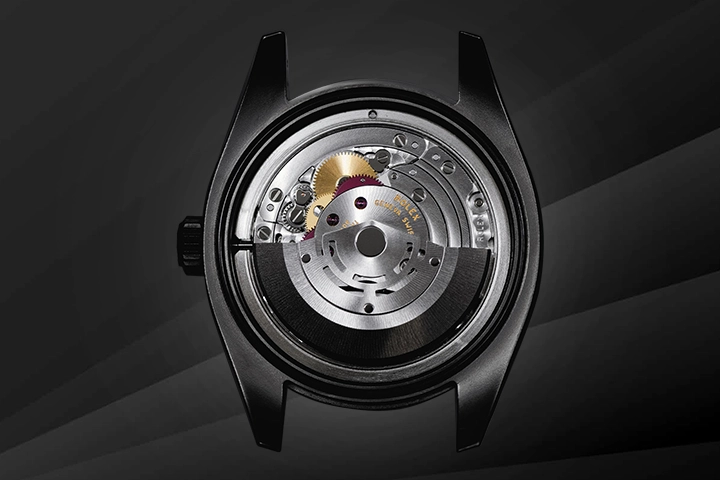Rolex, the widely acknowledged and reputed Swiss watchmaker, has an extensive history in luxury watchmaking. From creating the first waterproof, self-winding wristwatch to the first watch with a date, the luxury watch brand has many acclamations to its name. But has anyone ever seen a Rolex tourbillon?
Well, before you ask us.
What is a Tourbillon watch?
A tourbillon watch is a mechanical device consisting of a small cage that houses the escapement and balance wheel and rotates on its axis. The concept behind this setting is the constant rotation of the escapement and balance wheel when averaging out any positional errors that may have been caused by gravity, meeting the concerns for pocket watches that remained in one position for a long time.
Tourbillons are some of the most challenging and intricate mechanisms to make and are also quite expensive.
So, why has Rolex, a prestigious and high-end watchmaker, never shown interest in this rather challenging device?
Let's find it out.

Reasons Why Rolex Doesn't Make Tourbillons
1. Making watches for caves & cockpit settings
From the beginning, Rolex was focused on making utilitarian tool watches that served a specific purpose or profession. Whether that is creating the first waterproof wristwatch in the 1920s or designing the Submariner for diving in 1954, the Daytona for motor racing in 1963 or the GMT-Master for the pilots crossing multiple time zones in 1954. It also designed a watch catering to the needs of the explorers exploring the dark caves – the Rolex Explorer in 1953.
Each time, Rolex released the models, listened to the feedback and praise, learnt, re-assessed, and made changes accordingly over the decades. Keeping things simple and utilitarian has always been Rolex's foundation for success, which is why it's the world's most popular luxury watch company, synonymous with quality.
2. Not interested in being a part of the 'Holy-Trinity'
The 'Holy Trinity' of watchmaking comprises three renowned watch brands: Patek Philippe, Audemars Piguet, and Vacheron Constantin. Ever wonder why Rolex isn't a part of that? To enjoy entry into this exclusive club, a brand needs to be at least a century old and capable of making intricate complications such as minute repeaters, perpetual calendars, and, of course, 'tourbillons'.
It's also helpful if you design hand-painted dials and precisely engraved movement components. But yet again, there's no guarantee of entry after all this.
But there's no reason to think that Rolex feels left out of the club. Rather, the Swiss Maison refuses to join any such club.
3. There's no room for delicate watchmaking
A tourbillon is a device placed in a high-end watch that helps eliminate errors caused by vertical positioning by being suspended in a revolving cage that, in turn, goes through all such positions to neutralise each other.
Simply put, it is a little device added to a watch mechanism to help it keep more accurate time.
Visually, a tourbillon is quite fascinating to look at and is honestly a bit of a showoff. Watchmakers place them in little circular windows on the dial to flaunt the fancy moves. Rolex doesn't approve of such showoffs and is happy to keep its intricate movement detailing under the steel case backs.

4. Keeping things affordable & accessible
Some luxury watches will forever be out of reach for many. For instance, the Jacob & Co ultimate Bugatti Tourbillon is far from affordable. Rolex, on the other hand, creates watches that are doable. This is also one of the many reasons why Rolex enjoys such incredible popularity among buyers, enthusiasts, and collectors alike. The brand creates luxury watches accessible to aficionados.
If Rolex ever puts a tourbillon on a watch, it would increase the cost of the timepiece to several times that of a Daytona and thereby mess up its pricing scale. And, this won't be quite a Rolex thing to do.
5. Some say tourbillons serve no practical purpose
Some say that tourbillons have no practical purpose, and in many cases, that’s true. The tourbillon was designed to cope with the imperfections of a split bi-metallic balance, which, due to its two flexible arms, is impossible to poise due to centrifugal forces, varying temperatures, and repeated shocks received by a watch.
Nowadays, the watch industry relies on mono-metallic balances that stay firmly in place after being calibrated at the factory. Therefore, the practical purpose of the tourbillon is off the shelf. When a watchmaker aims to highlight their artistry and skill in intricate mechanics, they often include a tourbillon in their design.
As we know, Rolex has always refrained from such public stunts and focused on creating watches that cater to the needs of its wearers. For instance, mechanisms like perpetual movement, Chronergy escapement, Ring Command system, etc.
So, in no way will Rolex prioritise visual appeal over a practical benefit.

Which Rolex models can qualify for Tourbillonovation?
Well, that's just a fun way of saying Tourbillon innovation! Let's imagine for a moment that Rolex has indeed decided to make tourbillons a part of its creative catalogue. Which models do you think Rolex would choose to include a tourbillon in?
Considering Rolex's track record, it's safe to say that it won't put a tourbillon inside any of its tool watches. So, what's left is the dress watch category. How about a Rolex 1908 model?
Even thinking about that seems sinful. But did you know that in September 2018, independent Geneva-based Company Label Noir, specialising in watch customisation, actually breathed life into this imagination with its creativity?
Label Noir modified a Rolex Milgauss with a tourbillon.
If you're fascinated by what a Rolex tourbillon looks like, check out Label Noir's Milgauss tourbillon.
LASTLY..
Tourbillon and Rolex almost sound contradictory. So, let's put the matter on rest for now. Also, apart from tourbillion, many other unknown Rolex facts need your attention.
The decision to not introduce tourbillons to its productions reflects Rolex’s commitment to simplicity, reliability, and precision. By prioritising timeless design over complex mechanisms, Rolex has built a stern reputation for creating watches that stand the test of time.
Ultimately, the no-tourbillon Rolex watches prove that innovation doesn't always have to be complex; sometimes, the most remarkable advancements lie in the fundamentals of watchmaking.

